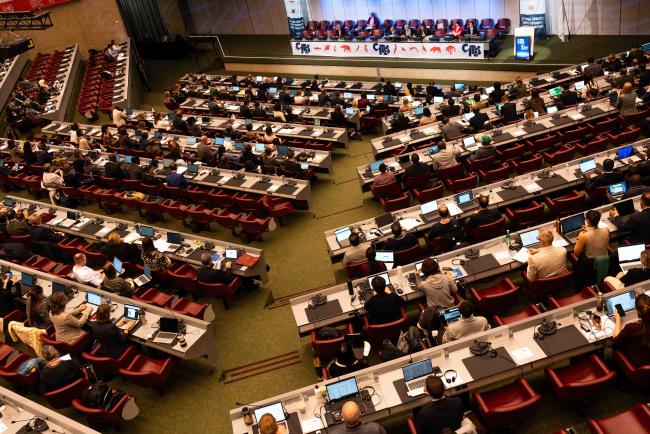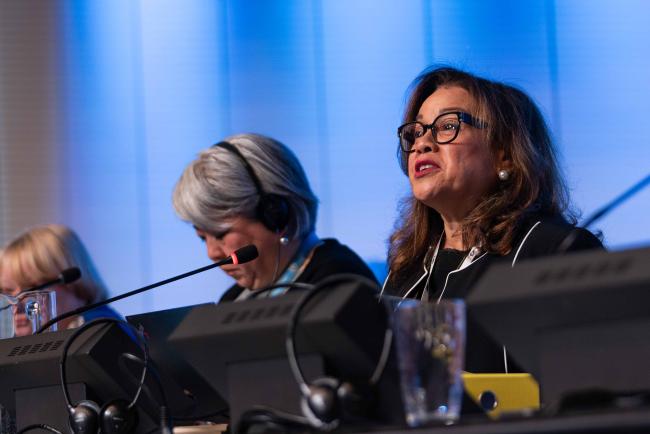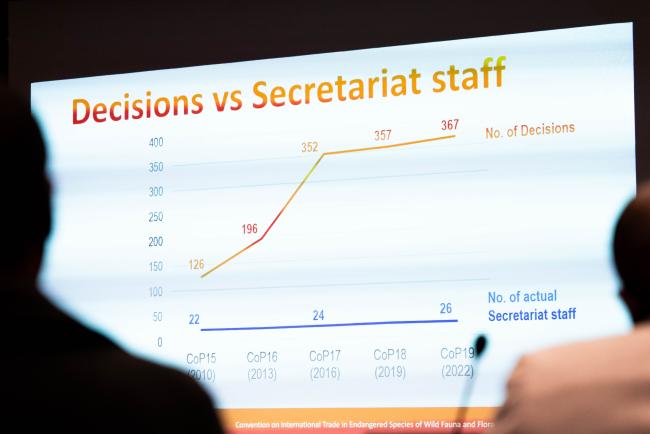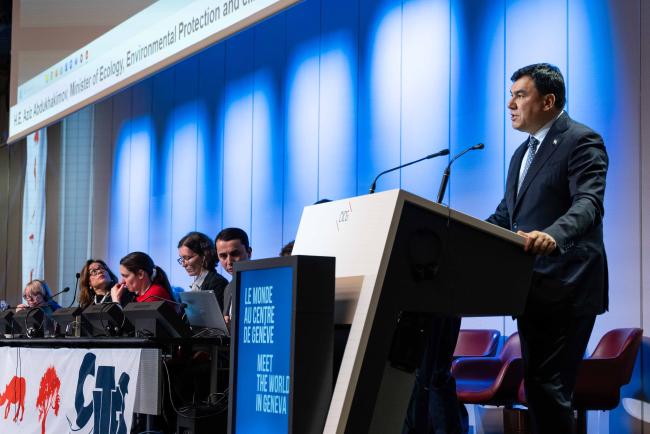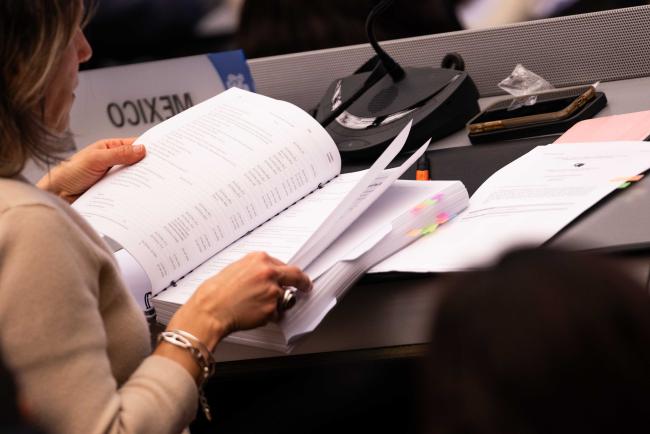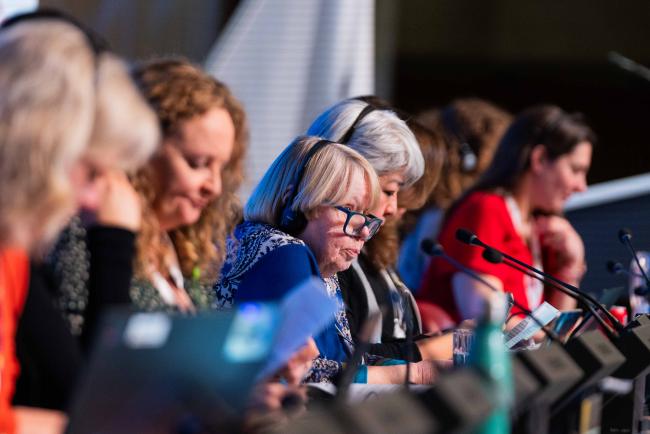Can the Convention on International Trade in Endangered Species of Wild Fauna and Flora (CITES) continue to address the complex challenges facing biodiversity and its conservation today? Can an overburdened Secretariat handle a ballooning workload on a relatively restricted budget? Can the 78th meeting of the Standing Committee (SC) tackle its largest-ever agenda of 87 items with 120 associated documents over six days—and still finish on time? These were some of the questions on delegates’ minds as the SC opened Monday in Geneva.
SC78 Chair Rosemarie Gnam welcomed participants to Switzerland and called for “solution-focused discussions” in order to generate strong recommendations to guide the future work of CITES. CITES Secretary-General Ivonne Higuero noted that over half a century of implementation, CITES had made remarkable achievements despite facing evolving challenges along the way, noting that key areas of progress recently have ranged from a comprehensive study on vaquita to momentum on CITES youth engagement. She also welcomed Turkmenistan as the 185th party to the Convention and thanked Uzbekistan for offering to host the 20th meeting of the Conference of the Parties (CoP20) in Samarkand later in 2025.
Due to time constraints at SC78, delegates were asked to restrain from thanking the host country in their first intervention, and to limit all their interventions to two minutes. Many honored the latter request in letter if not spirit: by reading statements so quickly the interpreters struggled to keep up.
In the morning, beyond the usual administrative and financial matters, agenda items discussed included proposed budget scenarios for 2026-2028, the development of a resource mobilization strategy, and arrangements for the 20th meeting of the CoP in Samarkand, Uzbekistan. Delegates also discussed proposed amendments to Rule 25.6 of the Rules of Procedure of the CoP, which states that if two or more proposals relate to the same taxon, but are different in substance, the CoP shall first decide on the proposal that will have the least restrictive effect on the trade and then on the proposal with the next least restrictive effect on the trade. This latter agenda item proved contentious, with the SC agreeing to form a drafting group that will between CoP20 and CoP21 consider how a stepwise approach could be implemented.
In the afternoon, delegates considered the selection of nominees for Committee Chairs and further arrangements for CoP meetings, including Panama’s generous offer to host CoP21, which was enthusiastically welcomed by delegates who previously enjoyed Panama’s hospitality at CoP19. Other items discussed included the reports of the Chairs of the Plants Committee (PC) and Animals Committee (AC), the role of CITES in reducing the risk of future zoonotic disease emergence associated with international wildlife trade, cooperation with multilateral environmental agreements and other international organizations, and the first of many compliance-related matters.
To receive free coverage of global environmental events delivered to your inbox, subscribe to the ENB Update newsletter.
All ENB photos are free to use with attribution. For SC 78, please use: Photo by IISD/ENB | Mika Schroder.

